Family : Carangidae

Text © Giuseppe Mazza

English translation by Mario Beltramini
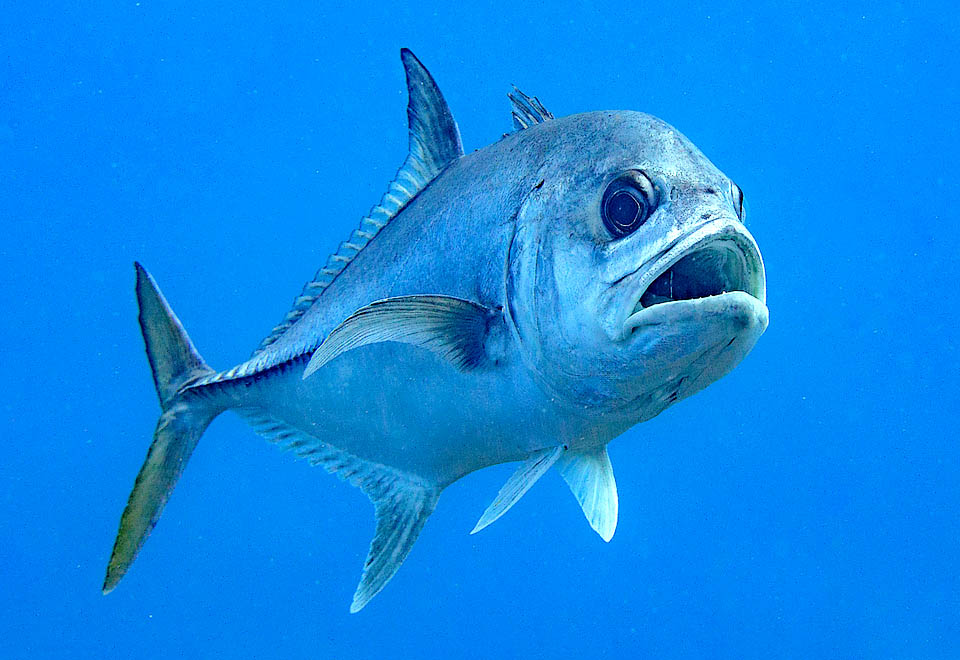
Even 1 m long with maximum weight of 13 kg, Caranx latus is present on both sides of the Atlantic © www.carlosestape.photoshelter.com
Known in French as Carangue gros-yeux and in English as Horse-eye jack, Caranx latus Agassiz 1831, belongs to the class of the Actinopterygii, the ray-finned fish, to the order of the Perciformes or of the Carangiformes after the taxonomists, and to the family of the Carangidae that gathers in 30 genera about 150 marine fast-swimming species frequents in the tropics and present also in the Mediterranean.
The genus Caranx comes from “carangue”, name the French of the Antilles gave to these fishes, even if Lacépède created it in 1801 thinking to the Greek “kara”, head, with reference to the prominent head, whilst with the specific term latus, wide in Latin, Agassiz draws attention to the height of the body.
Zoogeography
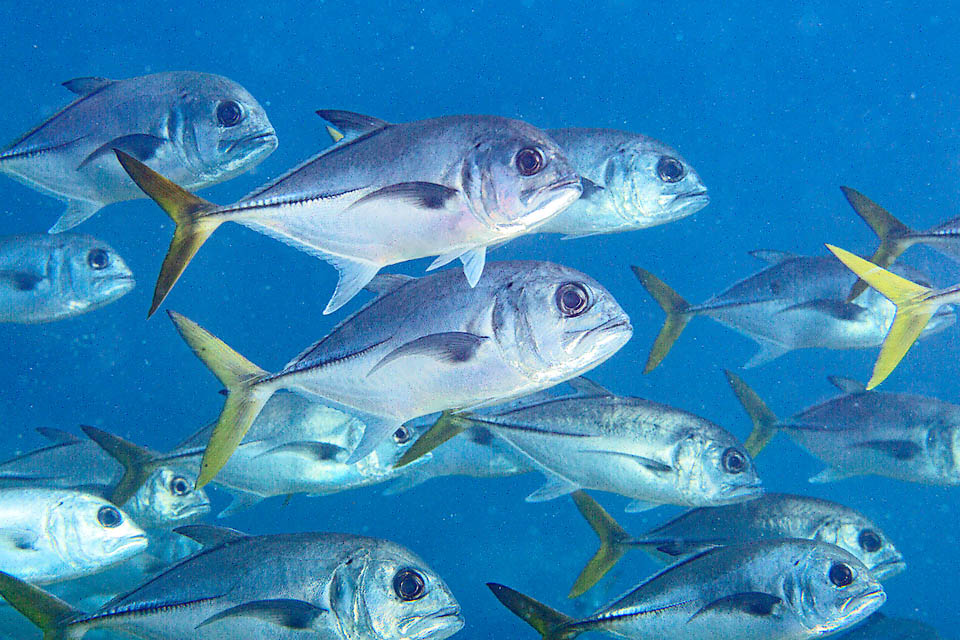
Gregariou not only when young, moves in schools and characterizes for a large eye with eyelid that has originated various common names like Horse-eye jack © www.carlosestape.photoshelter.com
Caranx latus is present on both sides of the Atlantic. In America it is common from New Jersey, Bermudas and northern Gulf of Mexico up to Sao Paulo in Brazil, whilst in East Atlantic sightings have occurred in the islands of St. Paul’s Rocks, Ascension and in the Gulf of Guinea.
Ecology-Habitat/
It is a fish that, even as an adult, when it reaches 1m of length and 13 kg, still moves in school, usually swimming in the first 20 m of water with sporadic descents up to 140 m. It loves the temperatures between 23,4 and 28 °C and can be found on sandy bottoms, madreporic formations and submerged prairies of phanerogams. It does not hesitate to go up a stretch of the rivers after hunting in brackish waters and is quite frequent along the coasts of the offshore islands.
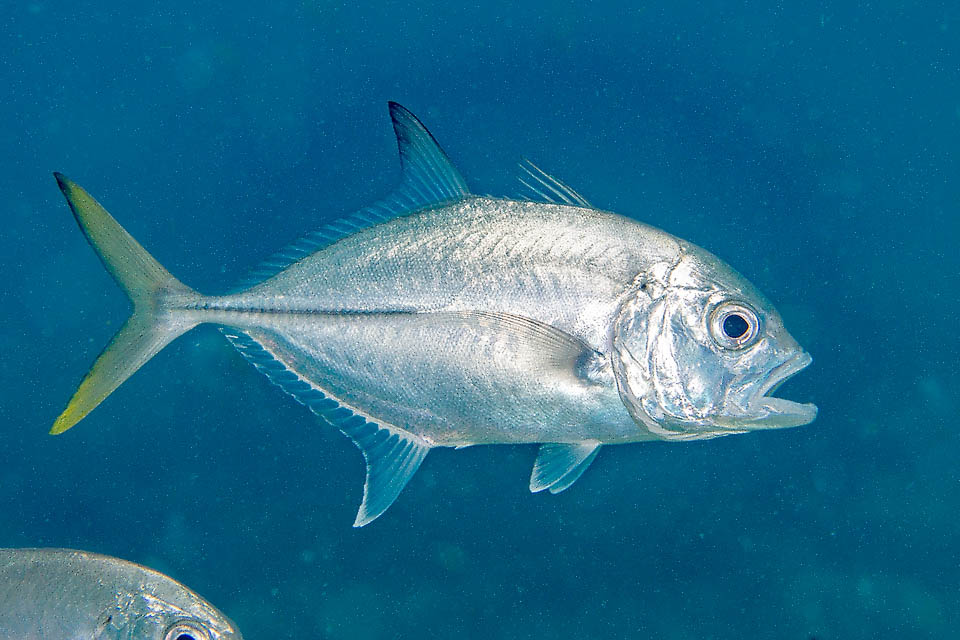
It voraciously feeds on fish and crustaceans, and though the little prized flesh and at ciguatera risk, in the Caribbean, they catch even 1.700 tons per year © www.carlosestape.photoshelter.com
Morphophysiology
As the common name states, the eyes, protected by a fatty eyelid, are proportionally very big if compared with the head. The upper jaw, with several rows of small teeth inside, ends with a band of strong canines, whilst the lower one has only one row of teeth.
The lateral line, dark at the end, is well marked and at times we note a blackish spot in the upper part of the operculum.
There are two dorsal fins: the first, with 8 spines and the second with one spiny ray and 19-22 soft. The anal has 2 spines detached anteriorly followed by 16-18 unarmed rays. The pectoral fin is longer than the head and is blackish towards the bottom. The caudal, dark yellow, is falcate like the pectorals for a fast swimming and we note bilateral keels on the peduncle.
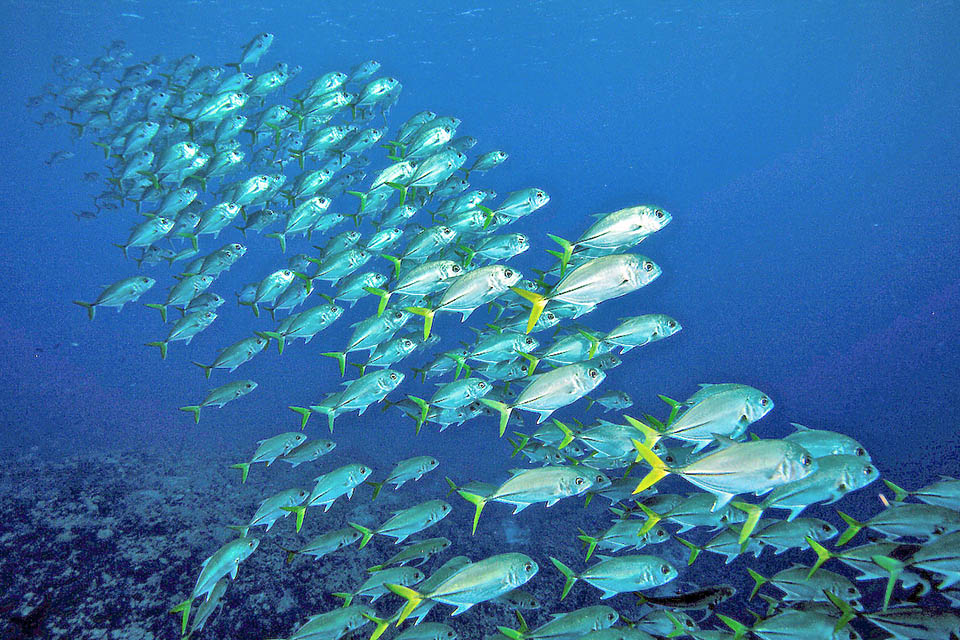
For reproducing, groups of 150-700 individuals form with small groups of 15-20 specimens that suddenly leave the school to lay close to the surface © www.carlosestape.photoshelter.com
The livery is bluish silver on the dorsal side and clear towards the belly. The juveniles are protected by 5 dark vertical mimetic bars on their flanks that fade with age.
Ethology-Reproductive Biology
Caranx latus is a diurnal predator hunting by sight fishes and crustaceans and is threatened in turn by large species such as Coryphaena hippurus and the seabirds, mainly larids, who surprise it when surfacing among the waves.
For the reproduction, occurring between April and July-August, aggregations of 150-700 individuals take form, where small groups of 15-20 fishes suddenly get off from the school to go up quickly in a sort of a dance in the overlying column of water and entrust the gametes to the currents that flow 1-2 m under the surface, a bit like the groupers Epinephelus striatus or Plectropomus laevis do in their large gatherings.
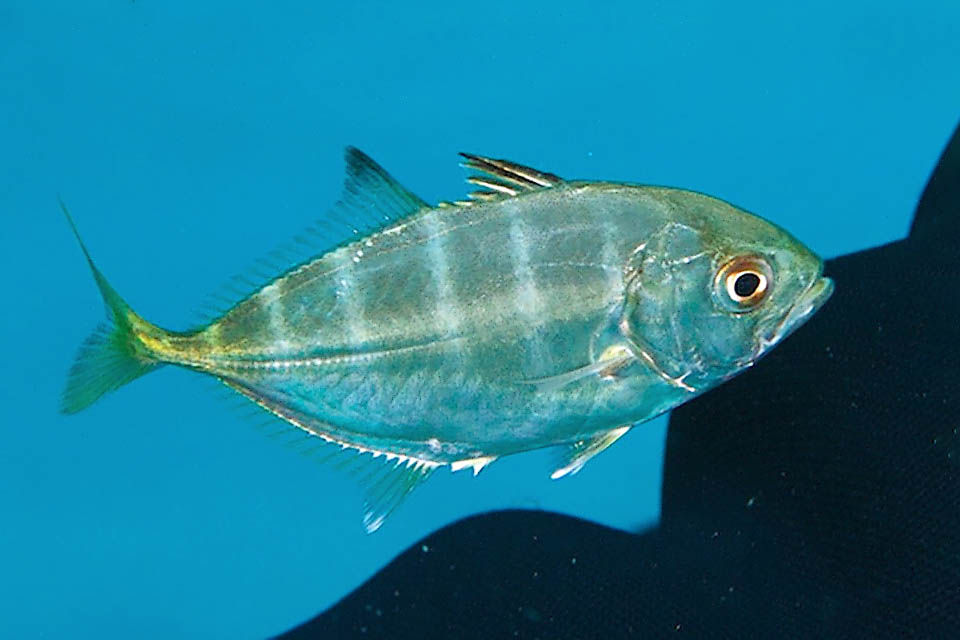
The juveniles are protected by dark vertical mimetic bars on the sides that fade with age. The populations are stable and Caranx latus is not an endangered species © www.carlosestape.photoshelter.com
The resilience of Caranx latus is mediocre, with a minimum time for the doubling of the populations of 1,4-4,4 years and the fishing vulnerability, high, marks 67 on a scale of 100, though the flesh is not particularly prized and at risk of ciguatera, a possible food poisoning, seen that it preys upon species that store in their diet the toxin produced by the dinoflagellate Gambierdiscus toxicus.
Caranx latus is fished in the Caribbean with gillnets, beach trawlers and hand lines, and they talk about peaks of 1.700 tons per year. The populations however do not appear declining and this jack therefore stands as “LC Least Concern” in the IUCN Red List of the endangered species.
Synonyms
Xurel lata Agassiz, 1831; Caranx lepturus Agassiz, 1831; Caranx fallax Cuvier, 1833; Caranx richardi Holbrook, 1855; Carangus aureus Poey, 1875.
→ For general information about FISH please click here.
→ For general information about BONY FISH please click here
→ For general information about CARTILAGINOUS FISH please click here.
→ To appreciate the BIODIVERSITY of BONY FISH please click here.
→ To appreciate the BIODIVERSITY of CARTILAGINOUS FISH please click here.
